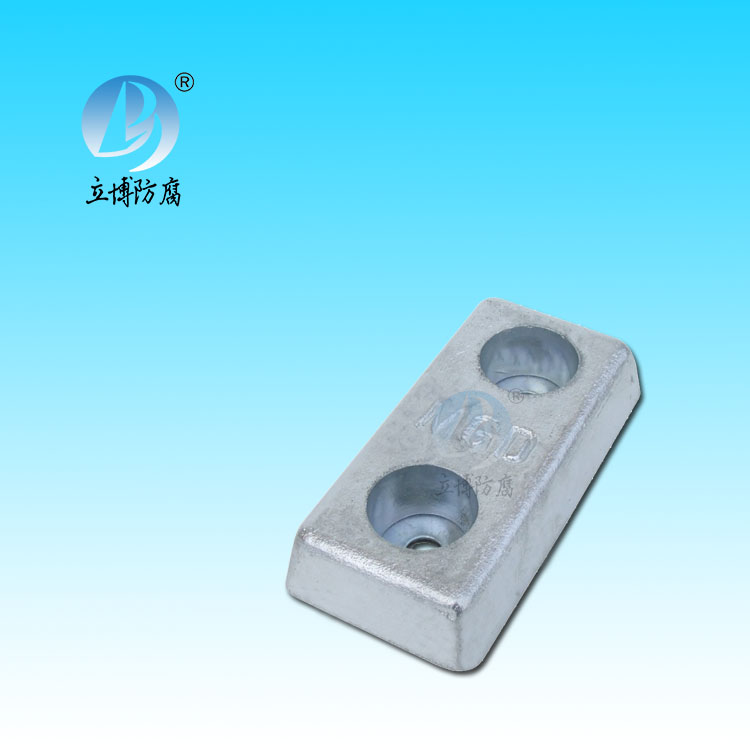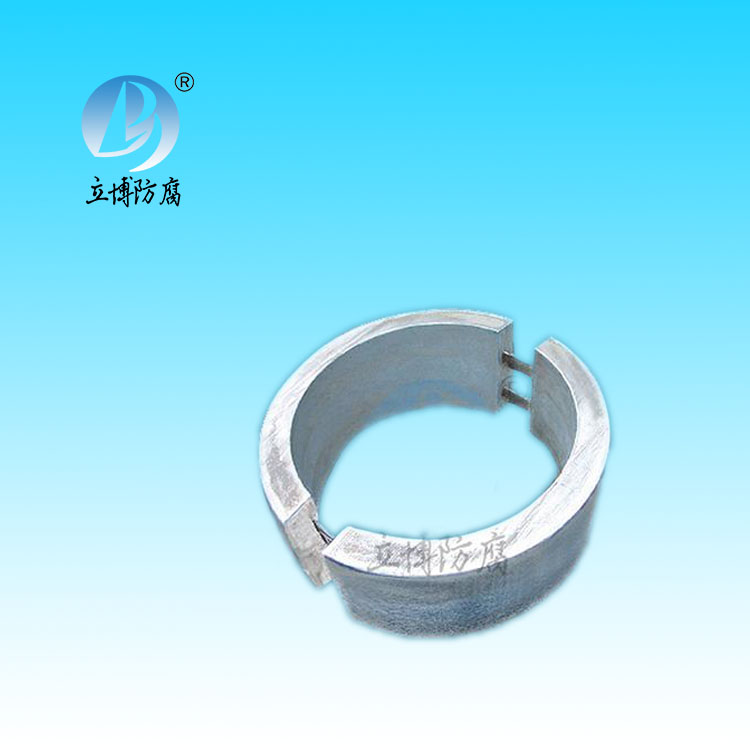News
News
- What is a sacrificial anode
- Basic requirements for reference...
- What does the reference electrode do...
- Why are zinc blocks attached to the ...
- What is the principle of impressed...
- What material does metal structure...
Contact
Phone:18739187123
hotline:0391-7588881
E-mail:970512272@qq.com
Address:Wuzhi County, Jiaozuo City, China
Q & A
Magnesium alloy sacrificial anode
- Author:Libo
- Source:wwww.dingzhiyinbi.com
- Date:2021-06-11
- Click:0
A list,
Magnesium anode has high driving voltage, low current efficiency and high cost. Magnesium anodes may be used with resistivity up to 20 ohms, depending on the shape and electrode potential (open circuit potential). A soil or freshwater environment of meters to 50 ohms. Generally should not be used for soils with a resistivity less than 10 ohms. M environment. The potential of the high potential magnesium anode is -1.75V CSE and the driving voltage is 0.85V. The potential of the low potential magnesium anode is -1.55V CSE and the driving voltage is 0.7V. The operating temperature can reach 100℃. When the residual amount of sacrificial anode is 15% of the initial weight, it is considered that the anode has failed, so the utilization rate of the anode is generally 85%. The current efficiency of magnesium anode is about 50% and may be lower due to environmental influence. When the soil or water is low in salt, the current output is small and, therefore, the erosion itself is relatively large. When the soil resistivity is high, the anode output current is small, the anode surface is easily passivated, further increase the grounding resistance, so that the anode output current is further reduced. There may be no significant change in the anode's open circuit potential or in the pipe potential measured at the current point. When the temperature rises, the erosion is intensified and the efficiency is reduced. Therefore, in salt water or salt water, the use temperature should not exceed 32℃; In fresh water, should not exceed 45℃, in seawater, its life is very short, should not be used.
Chemical composition of magnesium alloy anode
Table 1-1 Element scale type mg-Mn type
Al 5.3 ~ 6.7 0.010 or less
With recent 2.5 ~ 3.5 -
Mn 0.15 ~ 0.60 0.50 ~ 1.30
Fe acuities were 0.005, 0.03 or less
Ni acuities were 0.003, 0.001 or less
Cu acuities were 0.020, 0.020 or less
Si 0.10 or less -
Mg allowance allowance
Electrochemical function of magnesium alloy anodes
Table 1-2 Remarks of functional scale type mg-Mn
Density of g/cm&sup 3; 1.77 1.74?
Open circuit potential V-1.55-1.70 relative to CSE
Theoretical capacitance A.h/kg 2210 2200?
Theoretical current efficiency % 55 50 in seawater, 3mA/cm² On the premise of
Actual current efficiency % ≥50 40 in soil, 0.03Ma /cm² On the premise of
Actual capacity A.h/kg 1110 880?
Calculation method of magnesium alloy anode consumption
W=(I×t×8766)/(U×Z×Q) I anode current output (Amps) t Design life (YRS) U Current efficiency (0.5) Z Theoretical capacitance (2200Ah/kg) Q Anode utilization rate (85%) W Anode weight (kg)
Five, magnesium alloy anode application
1, main function: very high electrochemical function, average anode consumption, long life, large unit mass energy generation, is the ideal sacrifice anode material, suitable for the cathodic protection of metal structures in soil and fresh water medium. 2, range of use: sacrificial anode cathodic protection method, magnesium anode can be used for resistivity up to 20 ohms. A soil or freshwater environment of m to 100 o. m.
Specifications for magnesium alloy anodes
No. Magnesium Weight KG
1 to 4 + 0.2 * (75 + 85) 350 * 80
2 to 8 + 0.2 * (75 + 85) 700 * 80
3 to 11 + 0.3 * (90 + 100) 700 * 90
4 to 14 + 0.3 * (100 + 110) 700 * 105
5 to 22 + 0.3 * (130 + 150) 700 * 125







 客服QQ
客服QQ